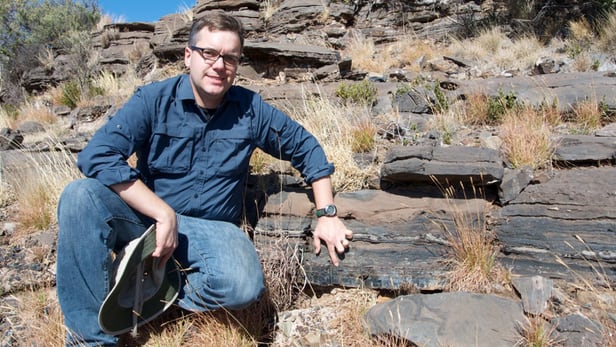When you think about the basic ingredients for life to thrive on Earth, no doubt water and oxygen pop to mind. But there was a time on our planet when our atmosphere only had one-one thousandth of one percent of the amount of oxygen it has now, yet there were plenty of life forms around then too, although proof of them has been scarce. A recent discovery of fossilized bacteria dating to about 2.5 billion years ago provides long-sought-for evidence that the Earth was crawling with life even though it lacked much oxygen during a phase in our planet's development known as the Neoarchean Eon.
"These fossils represent the oldest known organisms that lived in a very dark, deep-water environment," says Andrew Czaja, the assistant professor of geology at the University of Cincinnati in the US who made the discovery. "These bacteria existed two billion years before plants and trees, which evolved about 450 million years ago. We discovered these microfossils preserved in a layer of hard silica-rich rock called chert located within the Kaapvaal craton of South Africa."
The Kaapvaal craton is located in South Africa's Northern Cape Province and it's thought that the bacteria that became fossilized there lived deep beneath the sea while feeding off sulphur, much in the same way some extremophile bacteria still do today.
"These are the oldest reported fossil sulfur bacteria to date," said Czaja. "And this discovery is helping us reveal a diversity of life and ecosystems that existed just prior to the Great Oxidation Event, a time of major atmospheric evolution."
The Great Oxidation Event is a period of time about 2.5 million years ago when blue-green algae known as cyanobacteria began to proliferate. Those bacteria began off-gassing oxygen, which triggered a cooling of the planet along with a massive ice age – as well as the eventual genesis of the kinds of lifeforms we now live amongst.
Using radiometric and chemical dating techniques, Czaja believes that the bacteria became trapped in seabed sediment that was part of a theoretical supercontinent known as Vaalbara, consisting of what is now South Africa and Western Australia.
In the video below, you can see a 360-degree view
of the collapsed bacteria, which was once round, as
captured by an imaging technique known as
confocal laser scanning microscopy.
Czaja's findings have been published in the December issue of Geology, a journal of the Geological Society of America.
Source: University of Cincinnati
